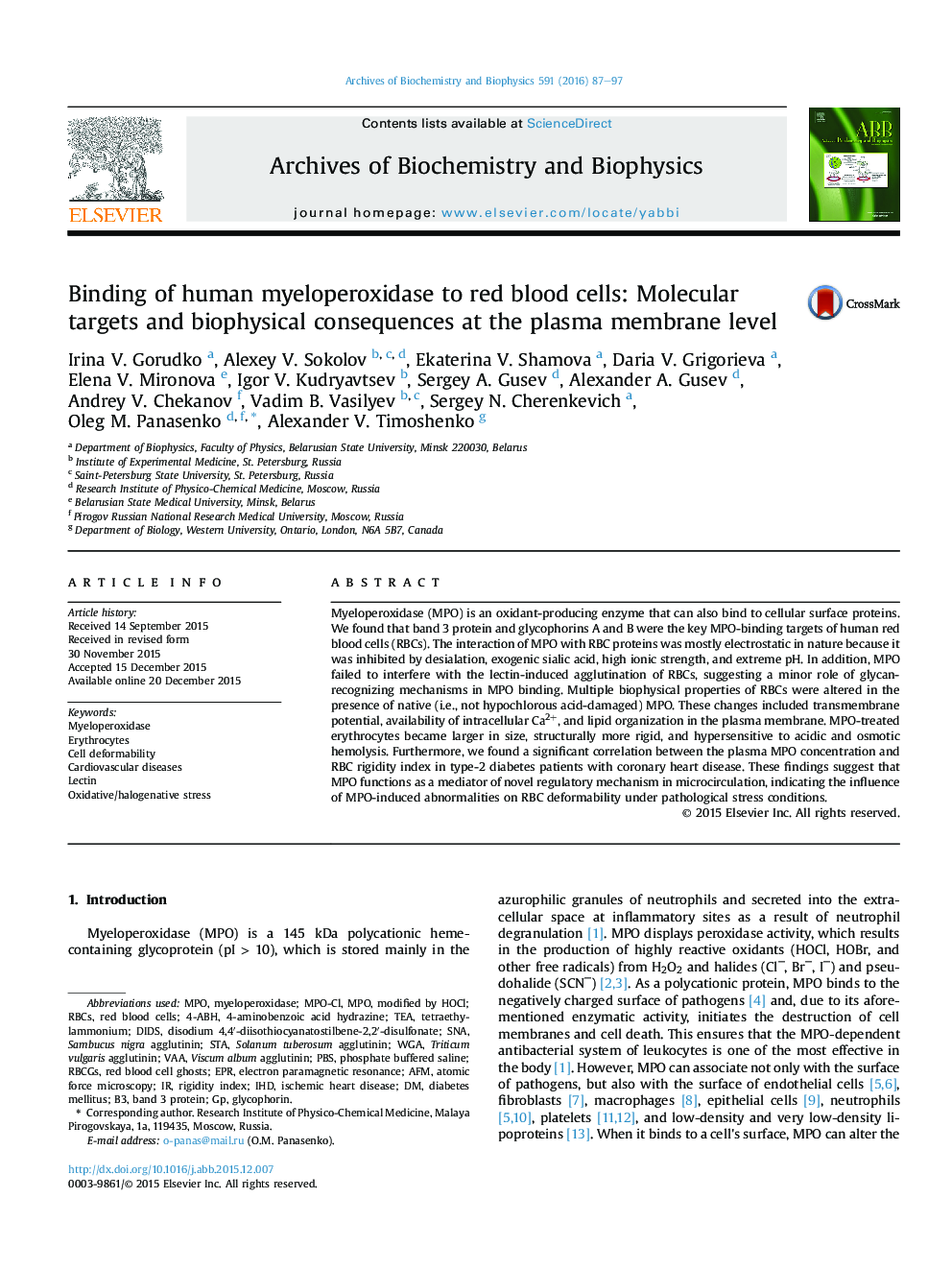| کد مقاله | کد نشریه | سال انتشار | مقاله انگلیسی | نسخه تمام متن |
|---|---|---|---|---|
| 1924813 | 1536312 | 2016 | 11 صفحه PDF | دانلود رایگان |
• Myeloperoxidase (MPO) binds to band 3 protein and glycophorins A/B of erythrocytes.
• MPO binding alters transmembrane potential, membrane fluidity, and cell size.
• MPO-treated erythrocytes become more rigid and hypersensitive to hemolysis.
• Erythrocyte deformability correlates with MPO levels in blood plasma.
• HOCl inactivates the interaction of MPO with erythrocytes.
Myeloperoxidase (MPO) is an oxidant-producing enzyme that can also bind to cellular surface proteins. We found that band 3 protein and glycophorins A and B were the key MPO-binding targets of human red blood cells (RBCs). The interaction of MPO with RBC proteins was mostly electrostatic in nature because it was inhibited by desialation, exogenic sialic acid, high ionic strength, and extreme pH. In addition, MPO failed to interfere with the lectin-induced agglutination of RBCs, suggesting a minor role of glycan-recognizing mechanisms in MPO binding. Multiple biophysical properties of RBCs were altered in the presence of native (i.e., not hypochlorous acid-damaged) MPO. These changes included transmembrane potential, availability of intracellular Ca2+, and lipid organization in the plasma membrane. MPO-treated erythrocytes became larger in size, structurally more rigid, and hypersensitive to acidic and osmotic hemolysis. Furthermore, we found a significant correlation between the plasma MPO concentration and RBC rigidity index in type-2 diabetes patients with coronary heart disease. These findings suggest that MPO functions as a mediator of novel regulatory mechanism in microcirculation, indicating the influence of MPO-induced abnormalities on RBC deformability under pathological stress conditions.
Figure optionsDownload high-quality image (224 K)Download as PowerPoint slide
Journal: Archives of Biochemistry and Biophysics - Volume 591, 1 February 2016, Pages 87–97
